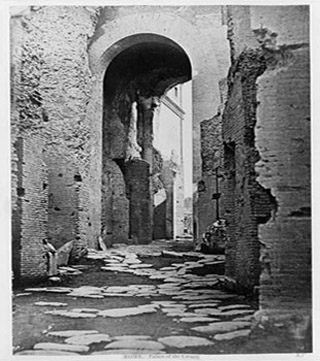
Rome. Palace of the Caesars. (Image courtesy of the Library of Congress, Prints and Photographs Division [reproduction number, LC-USZ62-104886 (b&w film copy neg.)])
Instructor(s)
Prof. William Broadhead
MIT Course Number
21H.402
As Taught In
Fall 2005
Level
Undergraduate
Translated Versions
Course Description
Course Highlights
This course features descriptions of course writing assignments. This course also features archived syllabi from various semesters.
Course Description
Focusing on the emperors Augustus and Nero, this course investigates the ways in which Roman emperors used art, architecture, coinage and other media to create and project an image of themselves, the ways in which the surviving literary sources from the Roman period reinforced or subverted that image, and the ways in which both phenomena have contributed to post-classical perceptions of Roman emperors. Material studied will include the art, architecture, and coinage of Augustan and Neronian Rome, the works of Suetonius and Tacitus, and modern representations of the emperors such as those found in I, Claudius and Quo Vadis.


